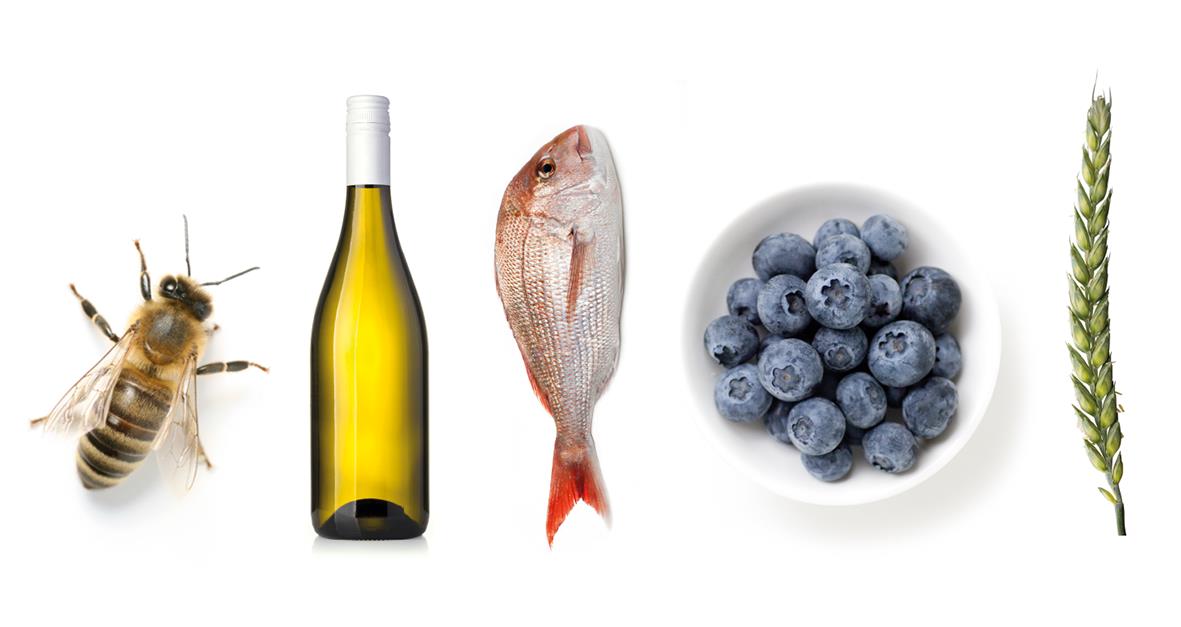Two news items related to its research work have been released by Plant & Food Research this week.
The first, headed Juice index’ offers potential as a predictive tool for wine composition, regards the development of a ‘juice index’ database, metabolomics database of New Zealand Sauvignon blanc (SB) grape juices and their corresponding wines.
A collaboration between Plant & Food Research, academia and industry, the database is the first of its kind in the world to be made available to the scientific community. It is expected to help build a better understanding of the different factors that contribute to variations in SB juices and wines, offering winemakers a potential tool to assist with managing and maintaining wine style.
The press statement says winemakers know that wine composition can be varied through the application of traditional viticulture and winemaking tools. However, novel tools are more likely to be developed if the various factors influencing grape and wine composition are understood.
SB grapes are widely grown in New Zealand and the Marlborough region is internationally reputed for a unique wine style, but the consistent production of highly typical wines is challenging because their composition differs from season to season and between locations within a region.
The ‘juice index’ database was created to acquire in-depth knowledge about the role of different factors – such as climate, soils, viticultural management and grape processing – on wine composition.
The project was started in 2010 with the current dataset including samples from around 400 grape juices collected from different regions in New Zealand over three seasons between 2011 and 2013.
With recent advancements in high resolution and sensitive analytical instruments, metabolomics shows enormous potential in the analysis of grape juice and wine. In this study, the comprehensive metabolite profiling of juices and wines was undertaken to create a database that could serve as a knowledge base not only for industry, but also for scientific community.
This data-driven research suggests that seasonal variation is more prominent than regional or intra-regional difference in SB grape juices and wines, despite the widespread use of vineyard irrigation in New Zealand to mitigate seasonal rainfall and evapotranspiration differences.
When combined with mathematical modelling, these datasets show great potential for building a predictive tool for wine composition and a platform for innovation. In addition to assisting in the production of wines of consistent composition, future applications could enable winemakers to tailor wines based on consumer preference.
The project was part of the Sauvignon blanc II programme, funded by the Ministry of Business, Innovation and Employment (MBIE) with co-funding from the New Zealand Winegrowers Inc.
Journal Reference:
Pinu F, Tumanov S, Grose C, Raw V, Albright A, Stuart L, Villas‑Boas S, Martin D, Harker R, Greven M 2019 Juice Index: an integrated Sauvignon blanc grape and wine metabolomics database shows mainly seasonal differences, Metabolomics 15 (3). DOI: 10.1007/s11306-018-1469-y
The second announcement from Plant & Food is headed Understanding the molecular mechanisms regulating stone cell formation in pear fruit.
This notes that stone cells are highly-lignified cells present in Chinese pear fruit flesh. They cause a gritty flesh texture which reduces the eating quality of the fruit and its export value. Consequently, the cells are targets for reduction in pear breeding programmes.
Plant & Food Research scientists, Drs Jia-Long Yao and Andrew Allan, in collaboration with Professor Jun Wu’s group in Nanjing Agricultural University, recently published two papers on understanding the molecular mechanisms regulating stone cell formation in pear fruit flesh.
Using molecular biology and genomics tools, the scientists identified a microRNA (miR397a) as a negative regulator and a transcription factor (MYB169) as a positive regulator for lignin deposition in the walls of the stone cells.
They also identified a mutation in the miR397a gene in pear germplasm, which is associated with a reduced number of stone cells. This finding provides a genetic marker that could be used in the early selection of low-stone-cell seedlings (at the seedling stage).
These discoveries could inform strategies to reduce, or even eliminate, the stone cells in pear fruit for future breeding programmes.
Journal references:
Xue C, Yao JL, Qin MF, Zhang MY, Allan AC, Wang DF, Wu J 2019. PbrmiR397a regulates lignification during stone cell development in pear fruit. Plant Biotechnology Journal. Vol 17 (1) DOI: DOI: 10.1111/pbi.12950
Xue C, Yao JL, Xue YS, Su GQ, Wang L, Lin LK, Allan AC, Zhang SL, Wu J 2019. PbrMYB169 positively regulates lignification in fruit stone cells of pear (Pyrus bretschneideri), Journal of Experimental Botany. Vol 70 (6) DOI: 10.1093/jxb/erz039
Source: Plant & Food Research












